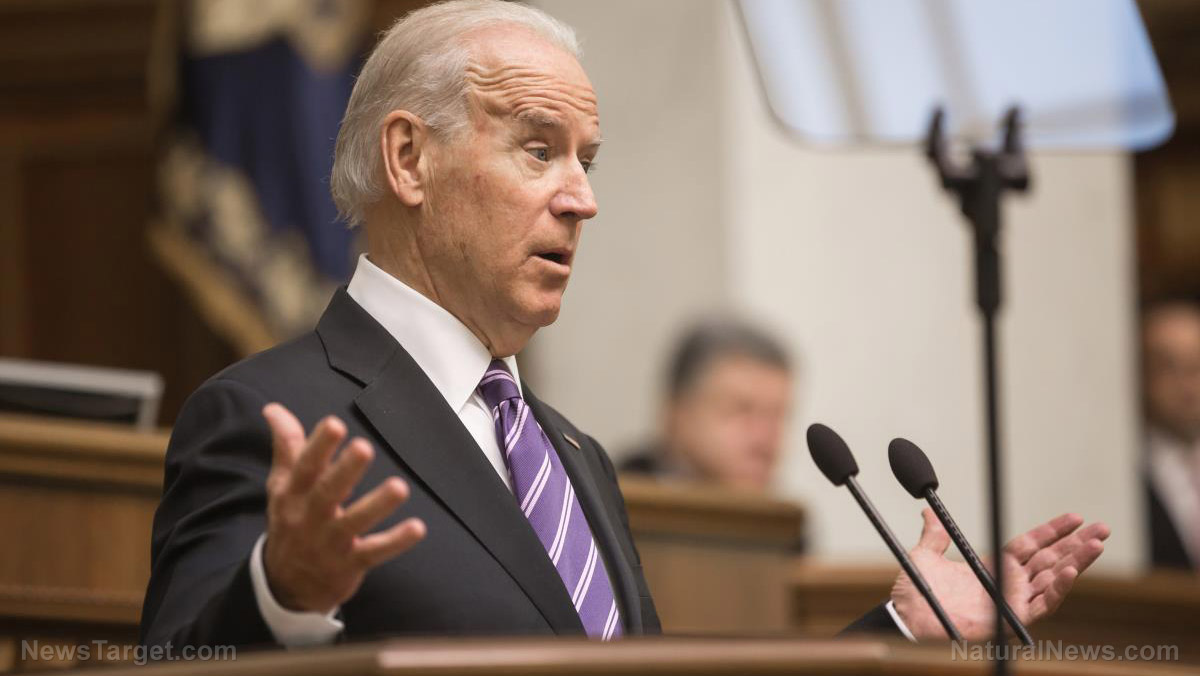COVID-era freight demand has NOT surged at all, so why all the congestion, delays and shocking freight price increases?
By jdheyes // 2021-08-11
Tweet
Share
Copy

The global economy is all out of whack thanks to a year's worth of COVID-related lockdowns which led to hundreds of millions of people being thrown out of work, factories and warehouses to close, and other businesses to dramatically slow down.
Now that countries including the United States have been reopening for months, one might think that things would be getting back to normal.
But they're not. Far from it.
In the U.S., hundreds of thousands of small businesses are looking for help, but they can't find it because too many Americans remain outside the workforce because they're continuing to collect taxpayer-funded "COVID relief" unemployment assistance.
There is a lot of money floating around in our economy, but prices are going way up because there are too few goods for the liquidity that's been injected thanks to massive government spending.
Why are their too few goods, though? Is it a supply chain problem that developed after companies were shut down for months last year? Maybe.
But one thing is certain: Global consumer demand is not booming, so why are we having supply issues and why are shipping prices going through the roof as well?
"There is no COVID-era surge in global cargo demand. There’s a lengthy albeit temporary spike in congestion compounded by a localized, stimulus-and-savings-driven demand boom in America," writes Greg Miller, the senior editor at Freight Waves, an industry news site.
"That explanation for skyrocketing rates gained more traction Friday when liner giant Maersk released details of its quarterly performance," he added.
The shipper estimated that global container demand was only up by about 2.7 percent in the second quarter of this year compared to the same time last year, when the world was essentially entering coronavirus lockdown.
"And yet," Miller writes, "Maersk’s average freight rate (including both contract and spot business) was $3,038 per forty-foot equivalent unit, up 63% from $1,868 per FEU in Q2 2019. The Drewry World Container Index of spot rates rose to $9,371 per FEU this week, 6.7 times what it was two years ago."
Why is that? Because here's the thing -- when it costs more to ship items, everyone along the chain of custody for those items, from wholesaler to retailer, is going to have to charge more to make a profit. And that means inflation for consumers as prices rise for those goods.
And we are definitely seeing inflation under the Biden regime.
“Global demand for the first part of the year is up around 4 percent compared to 2019. We did not have a capacity problem in 2019. We had enough ships, we had enough containers, ports were fine, and trucks and rail were fine, at least from a global perspective," consultant Lars Jensen, CEO of Vespucci Maritime, told American Shipper.
"With 4 percent global demand growth since then, we should not have a problem now," he continued. "You have some skewing because of the demand boom in North America, but none of this is down to a global demand boom — because that doesn’t exist. The problem right now is predominantly one of capacity."
"The U.S. is booming enormously,” he explained. “And while you can certainly shift vessels and containers from one trade to another, you cannot shift ports from one trade to another. It also doesn’t do you any good to have plenty of trucks in another country if the trucks are needed in the U.S. The same with rail.”
A big part of the problem with our country is the economic policies being pursued by the Democrats running things.
Shutting down for months to a year over a virus was stupid; it literally broke everything. Truck drivers, dock workers, barge captains, and others who moved freight for a living had to earn money somehow so many got into other industries. And now there are shortages of these workers up and down the supply chain.
What's more, this situation isn't going to resolve itself anytime soon, experts say.
Sources include:
FreightWaves.com
Collapse.news
Tweet
Share
Copy
Tagged Under:
collapse economy infrastructure transportation risk chaos Consumer Demand commerce shipping covid-19 lockdowns freight Biden regime cargo cargo demand global demand COVID lockdowns
You Might Also Like
Most covid deaths now occurring in “fully vaccinated” people
By Ethan Huff // Share
Fauci ADMITS “antibodies” from COVID-19 vaccines actually make the virus stronger
By Arsenio Toledo // Share
Start prepping now: Skyrocketing store prices hint at impending food shortages
By Zoey Sky // Share
France on brink of revolution as families are BLOCKED from buying food without ‘COVID passports’
By News Editors // Share
We are witnessing incompetence on a colossal scale throughout our society
By News Editors // Share
Recent News
REPORT: Over 40 million Americans turn to ChatGPT for medical advice
By lauraharris // Share










